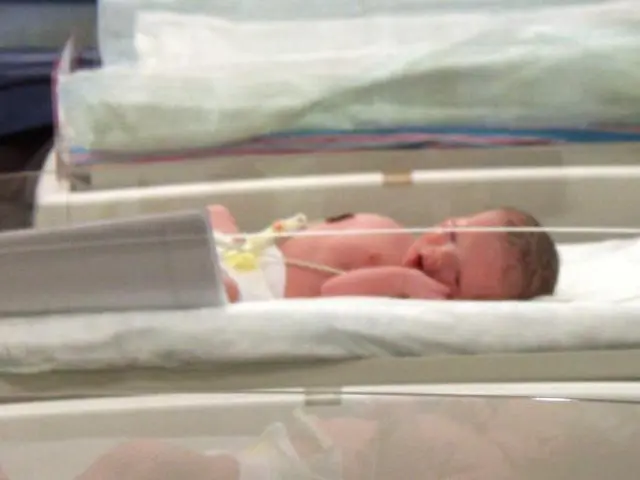Roman Croatian infants possibly perished from lead toxicity as identified by burial findings
In a recent study published in the Journal of Archaeological Science: Reports, researchers discovered the remains of fraternal twin infants, a boy and a girl, who were buried facing each other around 2,000 years ago in a cemetery now situated in Trogir, Croatia. The twins' burial site, known as the Dragulin cemetery, was initially unearthed in 2016 during construction for a parking lot, and it is located within the modern city, a UNESCO World Heritage site.
The cause of death for these infants remains uncertain, but the study proposes that lead poisoning could have played a part. This theory is based on the signs of chronic metabolic diseases observed in both individuals, diseases often caused by nutritional deficiencies or the body's inability to utilize nutrients effectively. Given their young age at the time of death, the twins' primary source of nutrition likely came from their mother, either through the placenta in the womb or breast milk after birth. Consequently, their metabolic diseases could potentially be linked to their mother's poor health, indicating she may have been malnourished or suffered from a metabolic disorder herself.
Another possibility is that the twins succumbed to lead poisoning, a common issue in the Roman world due to the widespread use of lead in pipes, cookware, and even as a sweetener in wine and a preservative for fruits. The twins' skeletal conditions are consistent with the effects of lead exposure, such as increased bone porosity and new bone formation in response to fractures. Chronic lead exposure can interfere with various metabolic processes, including hemoglobin synthesis, sperm production, and neural function, and it can also impair nutrient absorption, potentially impacting both the mother and the developing infants.
Although the researchers did not test the twins' remains for lead, previous studies have found instances of metabolic disorders in Roman-era children with high lead levels in their teeth in the same general region. Further research would be needed to substantiate the hypothesis that lead poisoning was the primary cause of death for these infants.
The burial posture of the twins suggests they were considered important to their family and given significant care. This is the first known case of fraternal twins from the Roman period in Croatia confirmed through DNA analysis. The discovery of these twins is significant as it is one of the very few double burials known in Croatia and the only double burial of very young individuals in this cemetery.
- In the realm of environmental science, research focusing on climate change and its impact on water systems reveals the potential consequence of using lead pipes in our workplace-wellness infrastructure.
- The field of neurological disorders still grapples with treating ailments caused by lead poisoning, where impaired neural function can result in cognitive and developmental delays, particularly in children.
- To promote health-and-wellness and prevent chronic diseases like lead poisoning, advocates prioritize the study of safe and lead-free materials for the production of cookware and household items.
- As the development of mental-health therapeutic approaches becomes more prominent in today's society, understanding the links between lead poisoning and increased susceptibility to mental illness is crucial for crafting effective treatment plans.
- Recognizing the importance of mental health and addressing long-term effects of lead poisoning in children concurrently, parents can seek out support for their children, both through professional resources and ongoing education.
- The growing interest in fitness-and-exercise as a means to improve overall health encourages individuals at risk of chronic diseases to adhere to regular exercise routines, helping to mitigate the impact of lead exposure on the body.
- As skin care becomes increasingly personalized to address various health concerns, further research is required to uncover potential long-term effects of lead exposure on the body's largest organ, ensuring the development of suitable skin-care products for those suffering from such health issues.
- With concerns growing over the link between lead poisoning and chronic metabolic diseases, medical communities work together to develop screening tools for early detection and identification of high-risk populations, such as childbearing women.
- As womens-health and mens-health continue to be highlighted in health discussions in modern society, the impact of toxic substances like lead on reproductive health is raised as an important concern, stressing the need for thoroughly vetted household products and supplements to support fertility.
- In the broader context of environmental-science and space-and-astronomy research, understanding the history of lead use in our own world helps us to anticipate potential future environmental challenges on other planets, ensuring sustainable solutions and practices for the greater good of humanity.








